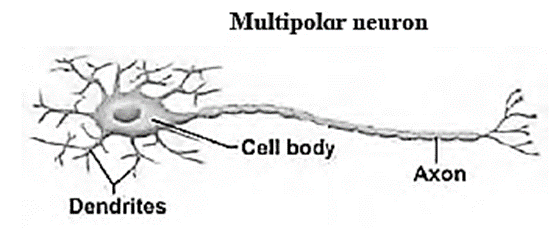Animal Tissues
Maharashtra Board-Class-11-Science-Biology-Chapter-10
Solution
Question 1.
Choose correct option
(A) The study of structure and arrangement of tissue is called as _____________
(a) anatomy
(b) histology
(c). microbiology
(d) morphology
(b) histology
(B) ____________ is a gland which is both exocrine and endocrine.
(a) Sebaceous
(b) Mammary
(c) Pancreas
(d) Pituitary
(c) Pancreas
(C) _____________ cell junction is mediated by integrin.
(a) Gap
(b) Hemidesmosomes
(c) Desmosomes
(d) Adherens
(b) Hemidesmosomes
(D) The protein found in cartilage is _______.
(a) ossein
(b) haemoglobin
(c) chondrin
(d) renin
(c) chondrin
(E) Find the odd one out
(a) Thyroid gland
(b) Pituitary gland
(c) Adrenal gland
(d) Salivary gland
(d) Salivary gland
Question 2.
Answer the following questions
(A) Identify and name the type of tissues in the following:
(a) Inner lining of the intestine
(b) Heart wall
(c) Skin
(d) Nerve cord
(e) Inner lining of the buccal cavity
Inner lining of the intestine -Epithelial tissue (Columnar epithelium) Heart wall -Myocardium Skin -Epithelial tissue (Stratified epithelium) Nerve cord -Nervous tissue Inner lining of the buccal cavity -Epithelial tissue (Ciliated epithelium)
(B) Why do animals in cold regions have a layer of fat below their skin?
(C) What enables the ear pinna to be folded and twisted while the nose tip can’t be twisted?
Hence, even though the tip of the nose is made up of elastic cartilage, it cannot be twisted like the ear pinna due to presence of bony-cartilaginous framework.
(D) Sharad touched a hot plate by mistake and took away his hand quickly. Can you recognize the tissue and its type responsible for it?
The skeletal muscle, i.e. a type of muscular tissue is responsible for this action
(E) Priya got injured in an accident and hurt her long bone and later on she was also diagnosed with anaemia. What could be the probable reason?
(F) Supriya stepped out into the bright street from a cinema theatre. In response, her eye pupil shrunk. Identify the muscle responsible for the same.
Smooth muscles are responsible for shrinking of eye pupil
Question 3.
Answer the following quetions
(A) What is cell junction? Describe different types of cell junctions.
Cell junctions : The epithelial cells are connected to each other laterally as well as to the basement membrane by junctional complexes called cell junctions. The different types of cell junctions are as follows: Tight junctions (TJs): These junctions maintain cell polarity, prevent lateral diffusion of proteins and ions
(B) With help of neat labelled diagram, describe the structure of areolar connective tissue.
(i) Areolar connective tissue : Location : Areolar tissue is a loose connective tissue found under the skin, between muscles, bones, around organs, blood vessels and peritoneum. It is composed of fibres and cells. The matrix of areolar tissues contains two types of fibres i.e. white fibres and yellow fibres. The four different types of cells present in this tissue are as follows: 
(C) Describe the structure of multipolar neuron.
Multipolar Neuron :

(D) Distinguish between smooth muscles and skeletal muscles.
smooth muscles
skeletal muscles
These muscles are found in the walls of visceral organs and blood vessels.
These muscles are found attached to the bone.
Each muscle cell is spindle shaped or fusiform and unbranched.
They are cylindrical in shape and branched.
They have a single, centrally located nucleus.
They contain several nuclei that are shifted to the periphery due to presence of large number of myofibrils.
Striations are absent in smooth muscles.
Striations are present in skeletal muscles.
They undergo slow and sustained involuntary.
They show quick and strong voluntary contractions.
They contain lesser myosin are more actin as compared to skeletal muscles.
They contain more myosin and lesser actin as compared to smooth muscles.
Question 4.
Complete the following table.
| Cell / Tissue / Muscles | Functions | |
| 1 | Cardiac muscles | |
| 2 | Connect skeletal muscles to bones. | |
| 3 | Chondroblast cells | |
| 4 | Secrete heparin and histamine |
Cell / Tissue / Muscles
Functions
1
Cardiac muscles
Cardiac muscles bring about contraction and relaxation of heart.
2
Tendons
Connect skeletal muscles to bones.
3
Chondroblast cells
Produce cartilage matrix
4
Mast Cells
Secrete heparin and histamine
Question 5.
Match the following
| 'A' Group | 'B' Group |
| 1. Muscle
2. Bone 3. Nerve cell 4. Cartilage |
a. Perichondrium
b. Sarcolemma c. Periosteum d. Neurilemma |
2. Bone 3. Nerve cell 4. Cartilage c. Periosteum d. Neurilemma a. Perichondrium
'A' Group
'B' Group
1. Muscle
b. Sarcolemma
Main Page : – Maharashtra Board Class 11th-Biology – All chapters notes, solutions, videos, test, pdf.
Previous Chapter : Chapter-9- Morphology of Flowering Plants – Online Solution
Next Chapter : Chapter-11-Study of Animal Type : Cockroach – Online Solution
We reply to valid query.